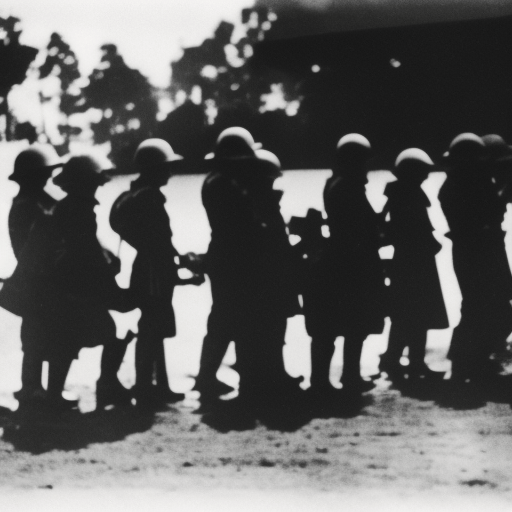Summary:
World War II (1939-1945) was a global conflict that involved many nations and resulted in significant political, social, and economic changes. It began with the German invasion of Poland in 1939 and ended with the surrender of Japan in 1945. The war was fought on multiple fronts, including Europe, Africa, Asia, and the Pacific, and resulted in the deaths of millions of people.
Causes:
The main causes of World War II can be traced back to the aftermath of World War I. The harsh terms imposed on Germany by the Treaty of Versailles, economic instability, and the rise of totalitarian regimes in Germany, Italy, and Japan all contributed to the outbreak of the war. Additionally, the failure of appeasement policies and the aggression of these totalitarian states further escalated tensions.
Major Events:
- Invasion of Poland: On September 1, 1939, Germany invaded Poland, marking the beginning of the war. This prompted Britain and France to declare war on Germany.
- Battle of Britain: From July to October 1940, Germany launched a series of air attacks on Britain. Despite heavy bombing, the British Royal Air Force successfully defended the country.
- Pearl Harbor: On December 7, 1941, Japan attacked the US naval base at Pearl Harbor, Hawaii. This event led to the United States’ entry into the war.
- D-Day: On June 6, 1944, Allied forces launched a massive invasion of German-occupied France, known as D-Day. This marked a turning point in the war and led to the liberation of Western Europe.
- Battle of Stalingrad: From August 1942 to February 1943, the Soviet Union successfully defended the city of Stalingrad against German forces. This battle was a major turning point in the war on the Eastern Front.
- Atomic bombings of Hiroshima and Nagasaki: In August 1945, the United States dropped atomic bombs on the Japanese cities of Hiroshima and Nagasaki, leading to Japan’s surrender.
Key Players:
- Axis Powers: Germany, Italy, and Japan formed the Axis Powers, which sought to expand their territories and establish dominance.
- Allied Powers: The Allied Powers, led by the United States, Britain, and the Soviet Union, aimed to defeat the Axis Powers and restore peace.
Consequences:
World War II had far-reaching consequences. It resulted in the creation of the United Nations, an international organization aimed at preventing future conflicts. The war also led to the establishment of the Cold War between the United States and the Soviet Union, which shaped global politics for decades. Additionally, the Holocaust, in which millions of Jews and other minority groups were systematically murdered by the Nazis, highlighted the need for human rights and sparked efforts to prevent genocide in the future.
Conclusion:
World War II was a devastating global conflict that reshaped the world. It was caused by a combination of factors, including the aftermath of World War I, economic instability, and the rise of totalitarian regimes. The war involved major events such as the invasion of Poland, the Battle of Britain, and the atomic bombings of Hiroshima and Nagasaki. The consequences of the war were far-reaching, leading to the establishment of the United Nations and the Cold War. The Holocaust also served as a grim reminder of the atrocities committed during the war. Overall, World War II remains one of the most significant events in human history.












